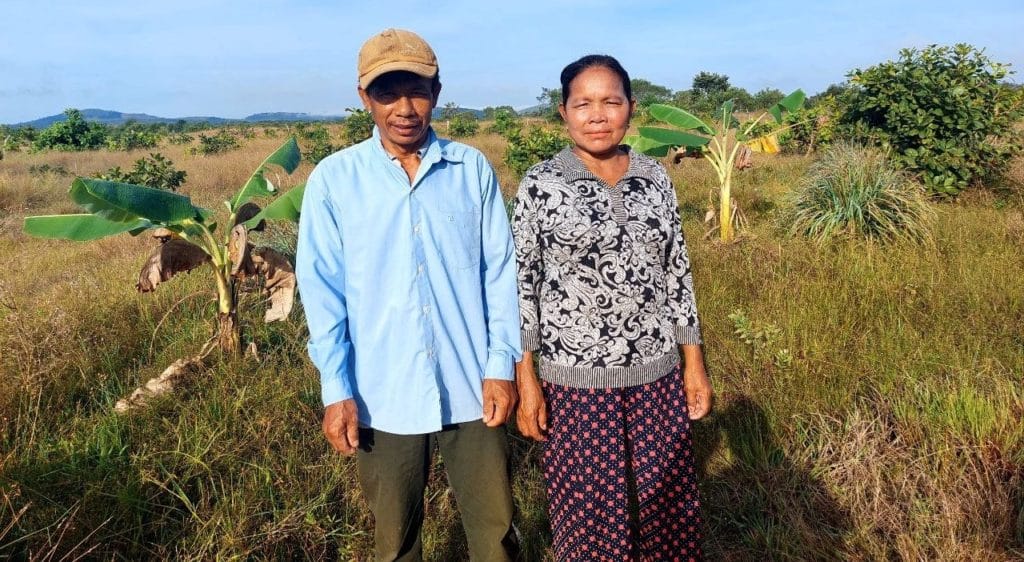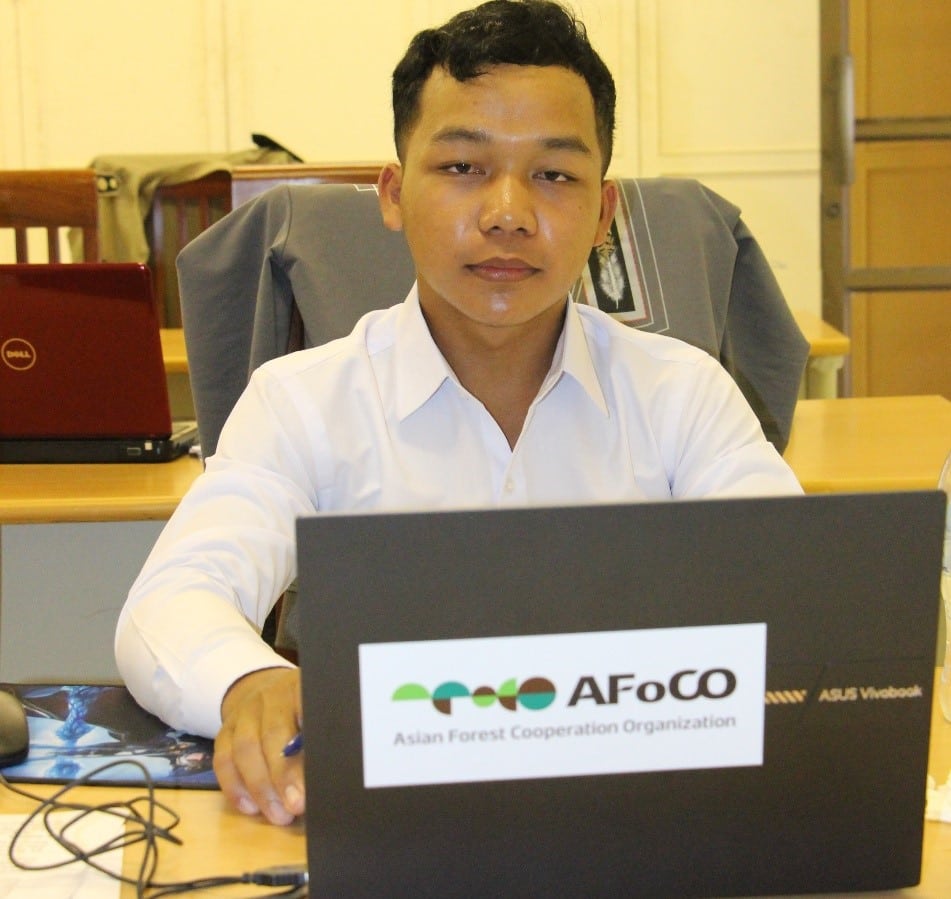This article presents the implemented activities from the project, “Site Restoration and Sustainable Management of Community Forest Using Multiple Use Tree Species and Agroforestry (AFoCO/027/2021)” in Kampong Seila District, Preah Sihanouk province, Cambodia.
By 2017, Cambodia has placed more than 50,000 ha of natural forest under the management of local communities living in or adjacent to the forests in the form of Community Forestry (CF). A key objective of the CF Program is to protect forests and improve the livelihood of local communities. Despite the implementation of the CFs, poverty alleviation has not seen significant success for CF beneficiaries across the country. The underlying reasons are the degraded conditions of the forests and the lack of active forest restoration. With financial support from the Asian Forest Cooperation Organization (AFoCO), the Forestry Administration has been implementing the project “Site Restoration and Sustainable Management of Community Forest Using Multiple Use Tree Species and Agroforestry” in Nakta Thmor Prong Community Forest in Preah Sihanouk province. The project will showcase how a community forest is rehabilitated in an effective and efficient way while meeting the ultimate goal of local livelihood improvement.
Nakta Thmor Prong Community Forest spans over a total area of 592 ha. It is managed by Thmei village which has a total population of 1,858 or 398 families. Forest products are collected for consumption and sale by a vast majority of households in the village. A total of nine products can be collected from the forest, including mushrooms, fish, wild vegetables, wild fruits, poles, rattan and bamboo, roots, and tubers, as well as medicinal plants and honey.
Building a foundation for forest restoration
Within the first six months of project implementation, the project team has focused mainly on capacity building of the local community to ensure that they are able to participate effectively in forest restoration. Therefore, representatives of the CF members were sent to a series of training courses and workshops organized by the project. The most important one is training on seedling production and forest restoration with the participation of 30 CF members. The training included a field visit to Damery Chakthlork CF and Chroh Svay CF in Kampong Speu province where participants learned how to restore the community forests, the challenges, and opportunities of forest restoration.

High expectations from the project
Mr. Nauch Sor, the current Head of Neakta Thmarprong CF, was very happy when he learned that the forest restoration proposal had been approved by AFoCO. He hopes the project will make his vision of the community forest come true. He expresses his opinions as follows:

“This is the first time since we started managing the CF 20 years ago that such a restoration project is being implemented in our CF. We always imagine the CF forest as being filled with big trees, fruit trees, wildlife, and NTFPs as it was 30 years ago before it was degraded. We are making this dream a reality with the introduction of this project. Although community members have been protecting the forest for almost 20 years, we have yet to see the return of valuable species like malva nut trees and Daunchem (Heritiera javanica).
During the training on forest restoration, some community members attended a lecture on agroforestry systems, which revealed that their past and current farming practices are neither productive nor sustainable since they lack inputs, soil fertility, and a limited understanding of plant interactions. Community members are eager to improve their farming practices to generate more income. It is important to note, however, that some of the improvements will only be possible with substantial inputs, such as seeds, seedlings, and labor, so the project must provide substantial support, both technically and financially.
Ms. Marn Mith owns a 2-ha plot of farmland. She planted cashew nut trees a few years ago with some bananas in between the trees. In order to improve farm productivity, she requests that the project team provide support and showcase good practices so that other farmers can learn from them as well. She said:
“As farmers, our livelihoods depend mainly on the lands. Despite this, farming today is not a good way to make a living. Our livelihoods must be derived from other sources, such as forest products and selling labor. We want to improve the productivity of our lands, but we don’t know how to do it…I think the project can help us with this.”

Future of Neakta Thmarprong CF rests on the young generation
Mr. Khea Chandara, a young community member was selected by the CF committee to attend a training course on GIS and RS in Phnom Penh with another CF member after having trained on computer literacy in the past three months in the district town. They will become resource persons responsible for drawing and showing the progress of restoration maps to the CF members.

“Thank you for giving me the opportunity to attend the computer training course and RS and GIS courses. Throughout the training, I received excellent care from the teachers. Their guidance ensured that I understood all concepts and could use the new skill effectively. Since I now have this knowledge and skill, I will be able to assist my community in rehabilitating our community forest.”
Contributed by Mr. Pak Sngoun Pisey, Chief of Forest Carbon Credit and Climate Change Office of Cambodia’s Forestry Administration and Project Manager of AFoCO/027/2022

